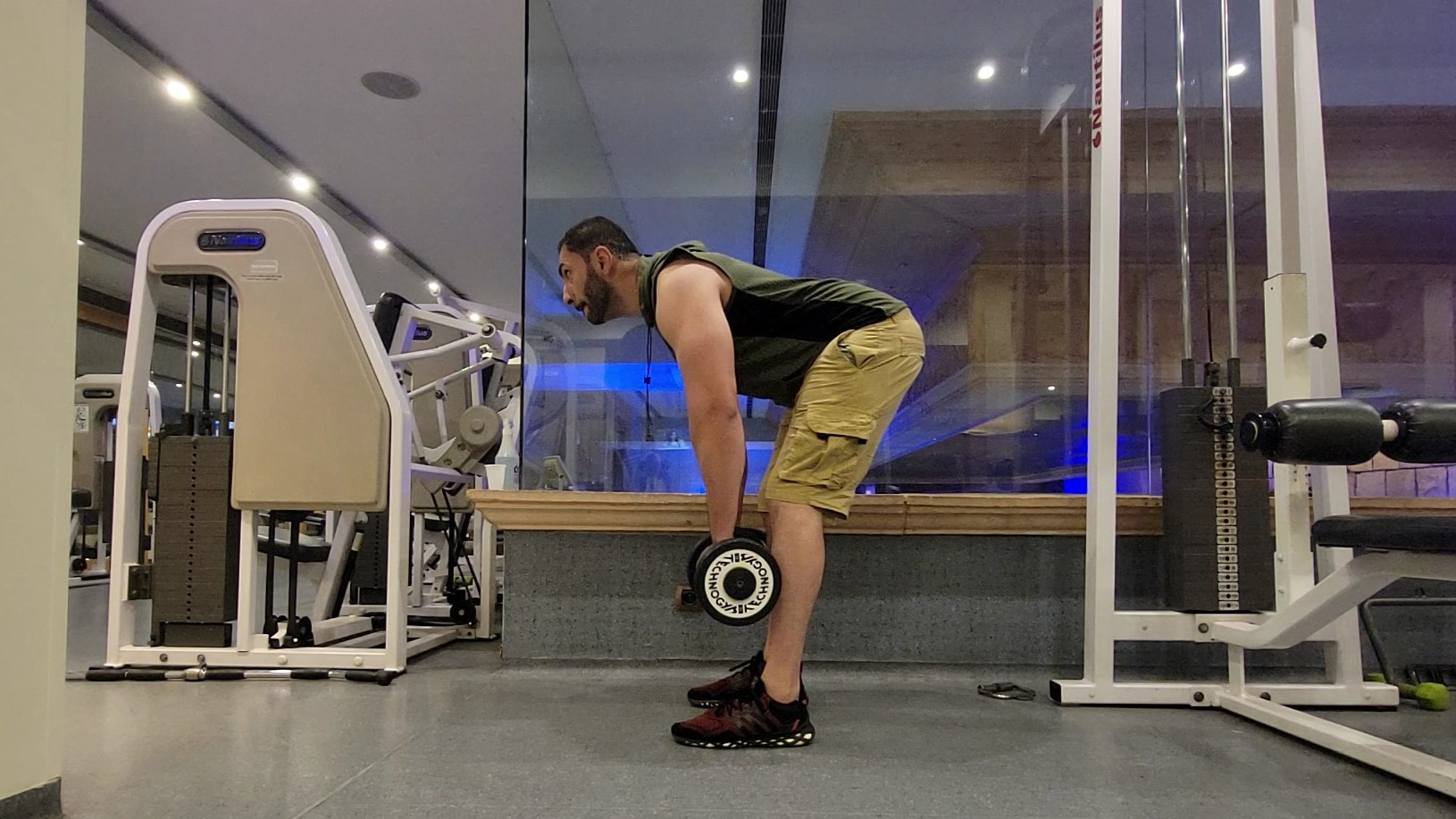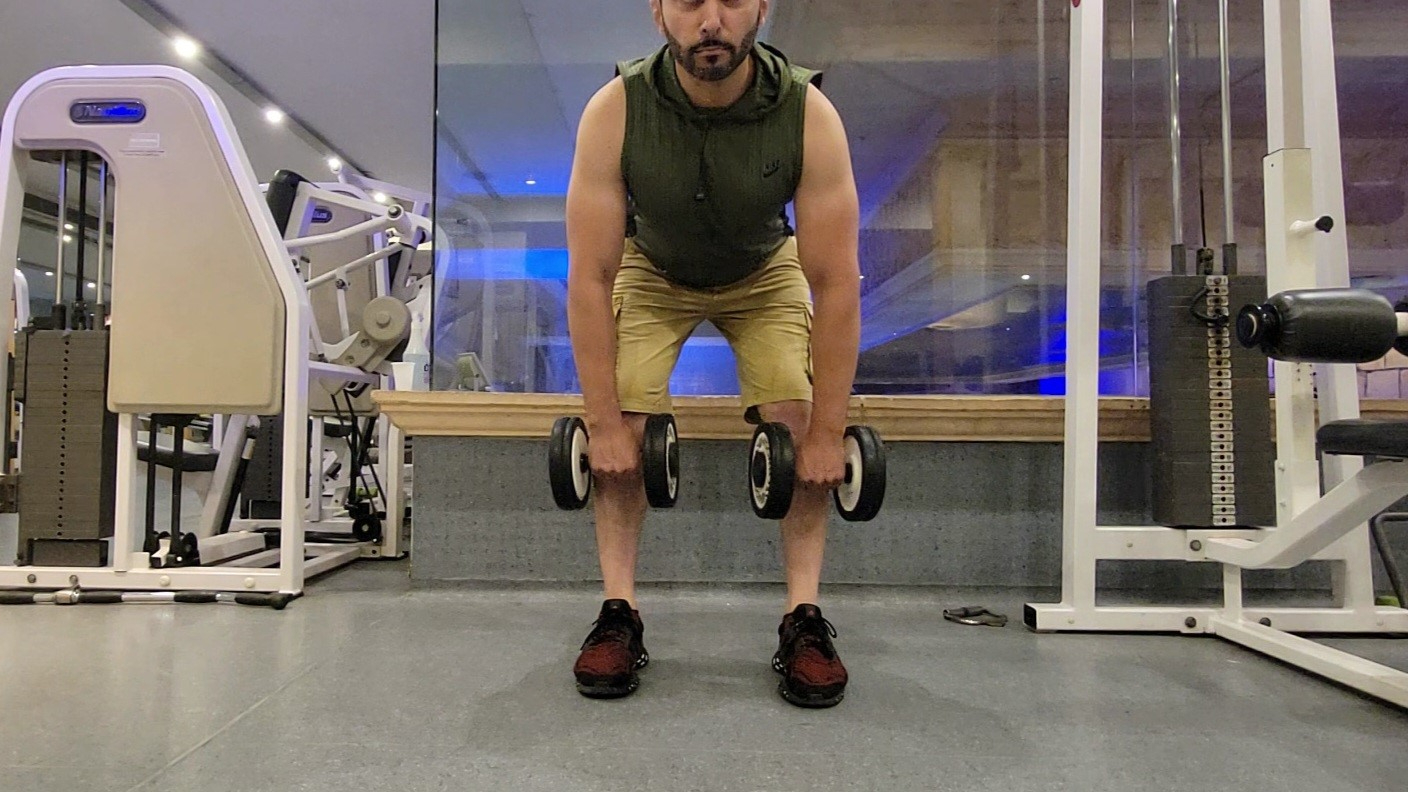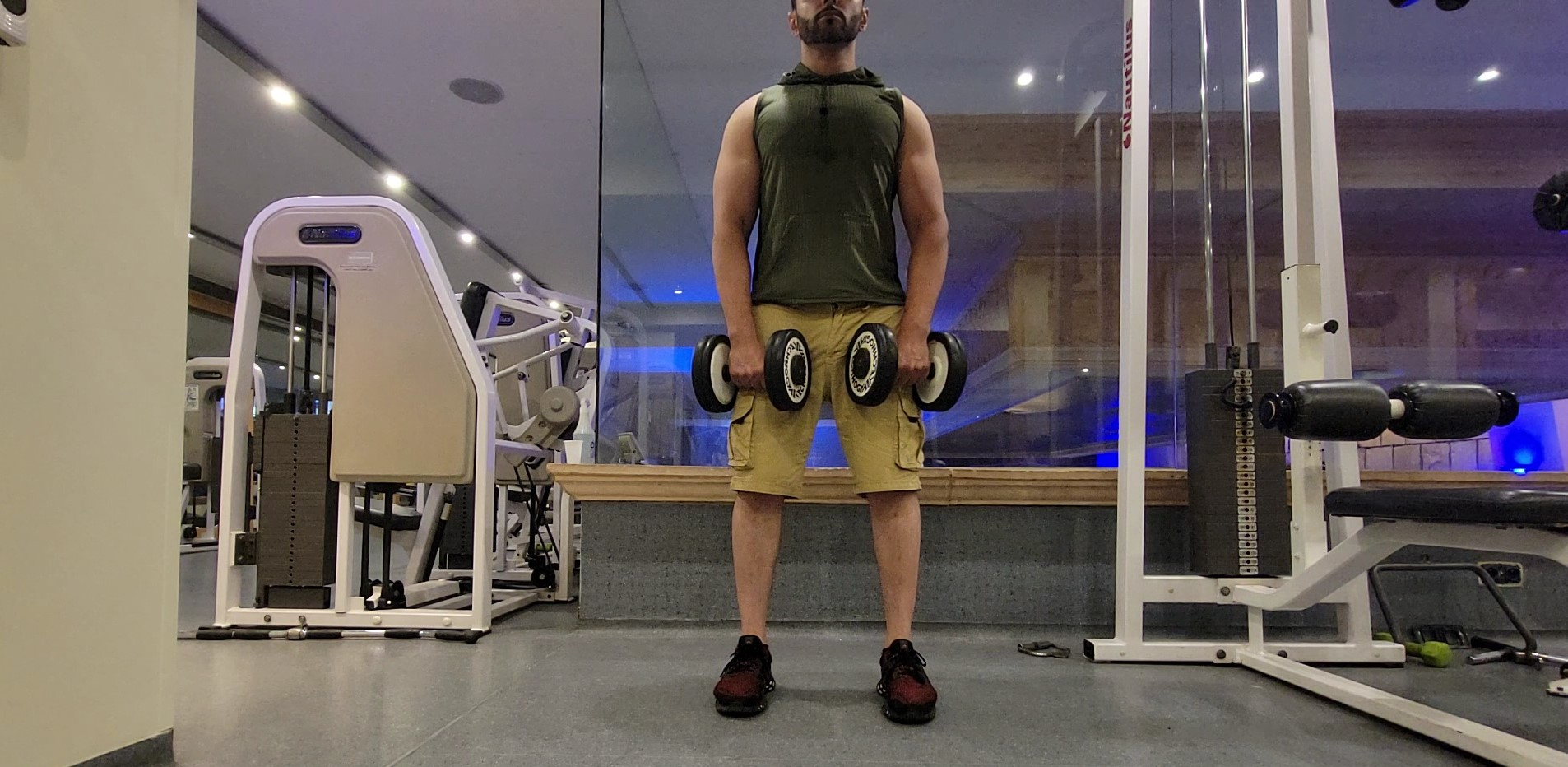How to deadlift with dumbbells to build full-body strength
Learn how to deadlift with dumbbells to build muscle all over and improve your posture


Learning how to deadlift with dumbbells with perfect form can help you build muscle more effectively, work several areas of your body, and strengthen your core to improve your posture and stability.
Whether you're at the gym with fixed-load weights or at home with a set of the best adjustable dumbbells, practicing your technique can help you get the most from your training and avoid injury, which is a concern when exercising with weights.
Although it's common to see people deadlifting with a barbell, learning how to deadlift with dumbbells teaches you the essential movements, including the hip hinge you need in many strength training exercises, and is a great way to strengthen your posterior chain — the muscles along the back of your lower body.
To help learn about the benefits of deadlifting and how to properly perform a dumbbell deadlift, we spoke to Farzad Aziz, a certified personal trainer, strength and conditioning coach, and the founder of Pro Sports Recovery in Palo Alto, California.

Farzad Aziz is the founder of Pro Sports Recovery. He has coached collegiate football at De Anza College in Cupertino, California, and served as a strength-and-conditioning coach, position coach, and as an assistant defensive coordinator.
How to deadlift with dumbbells



Learning how to deadlift with dumbbells properly will not only help ensure you reap the muscle-strengthening benefits of deadlifting, but also reduce the risk of injury — particularly to your lower back, knees and hips.
“As you perform the deadlift, keep the weight evenly distributed on your feet, activate your quads and glutes, and drive straight up, pushing your hips forward until you are standing upright,” says Aziz.
- Stand with your feet slightly wider than shoulder-width apart, with a dumbbell in front of each foot.
- Engage your core and glute muscles as you hinge forward, sitting your hips back and bending your knees, with your spine straight and chest up.
- As you lower, reach down to grip each dumbbell with your palms facing your shins and hands shoulder-width apart.
- With your chest up and a forward gaze, initiate the lift by contracting your glutes, quads, and hamstrings as you pull the weights up just in front of your shins. Continue rising until you return to standing position with your knees and hips straightened.
- Hinge at your hips to reverse the movement and bring the weights back down to the ground with control. That's one repetition. Aim for 5-12 reps.
How to do a Romanian deadlift


“When it comes to the Romanian deadlift, there are some bio-mechanical differences,” says Aziz. “When performing this exercise, you will be taking the bar, or dumbbells, off the rack instead of the ground like in a traditional deadlift.”
Start your week with achievable workout ideas, health tips and wellbeing advice in your inbox.
Aziz walks through how to do the Romanian deadlift with a barbell, but you can use dumbbells instead. The process is the same — the aim is still to not allow the weights to touch down to the ground.
- Pick up your weights, with palms facing towards your body and weights at hip height. Position your feet a little wider than shoulder-width apart, with a slight bend in your knees.
- Push your hips back as you lower down with a neutral spine. Once the weights reach the top of your shin, you could feel a stretch in your hamstrings and glutes.
- Drive your hips forward, sliding the bar against your body as you stand all the way up. Then, squeeze your glutes and hold the position for a second or two.
- Slowly reverse the motion, bringing the weights back towards your mid-shin/ankles as it tracks just in front of your quads and shins. That's one reposition.
How to do a dumbbell deadlift for beginners
Beginners can perform the deadlifts with dumbbells as described, but start with lighter weights. Consider performing the exercise in front of a mirror to ensure you are keeping your back straight and using the proper deadlifting technique as well.
However, Aziz recommends that instead of doing the standard dumbbell deadlift , beginners could learn to deadlift with dumbbells using the Romanian deadlift technique instead.
FAQs
What weight should you use for a dumbbell deadlift?
The amount of weight depends on your current strength, as well as your primary training goal. Beginners should start with light weights; even if you can lift more weight, make sure that you have mastered the technique before you increase the load.
Once you find that the load is no longer a challenge, use the progressive overload technique to increase the weight, so that 8-12 repetitions feel like a challenge to your muscles again without affecting your form.
The weight should be heavy enough that you are reaching fatigue by the last rep of each set.After you can do 2-3 sets of the dumbbell deadlifts and hit 12 repetitions per set with correct form, increase the weight.
What muscles do you use during a dumbbell deadlift?
When you perform the deadlift exercise correctly you’ll work most of the major muscles in the trunk and lower body, includes your glutes and hamstrings, making the deadlift one of the best full-body strengthening exercises.
Your core muscle is also involved to help stabilize your body as you lower into the lift and rise up with the weights. Engaging your core also prevents your lower back from arching, allowing you to maintain a straight spine.
What are the benefits of dumbbell deadlifts?
Deadlifts are an effective way to build strength in your posterior chain, according to a review published in the Journal of Human Sport and Exercise. This includes your legs, glutes, and back.
Improving strength in these areas helps you stay mobile over the years, develops flexibility, and aids with everyday activities like walking, jogging, and bending down towards the floor.
And, as a multi-muscle compound exercise, it's an efficient way to train. Isolation exercises like bicep curls can be effective, but the deadlift engages several areas of your body so you can build muscle even when you're short on time.
If you regularly train at the gym, it's also worth learning how to deadlift properly with barbells, but perfecting your technique with dumbbells means you don't have to own a gym's worth of equipment to train at home.
What's the difference between a dumbbell deadlift and a Romanian deadlift?
Traditional deadlifts and Romanian deadlifts (RDLs) target similar muscle groups, but there are differences. According to Aziz, the main distinction is the phase of muscle contraction emphasized.
“The fundamental difference is that traditional deadlifts focus on the concentric contraction, where the muscle shortens as it contracts,” he says. “The Romanian deadlift focuses on the eccentric contraction, which increases tension on a muscle as it lengthens.”
During an RDL, you focus on lowering the weights from standing, and during standard dumbbell deadlifts, the emphasis is on the movement as you raise the weights from the ground to a standing position.
Amber Sayer is a Fitness, Nutrition, and Wellness Writer and Editor, and contributes to several fitness, health, and running websites and publications. She holds two Masters Degrees—one in Exercise Science and one in Prosthetics and Orthotics. As a Certified Personal Trainer and running coach for 12 years, Amber enjoys staying active and helping others do so as well. In her free time, Amber likes running, cycling, cooking, spending time outside, and tackling any type of puzzle.
